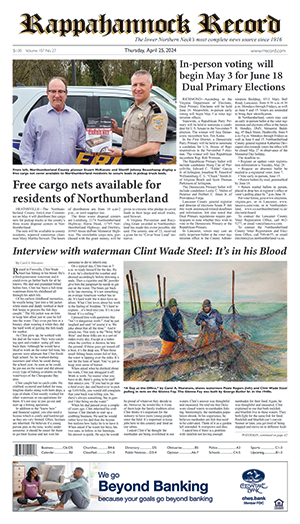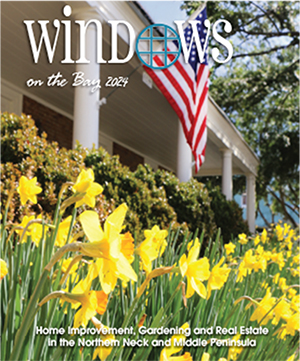by Henry Lane Hull
In the spring a young man’s fancy turns to….. gardening. Well, we are not yet in springtime, and I probably should be stretching it a bit to claim youth, but after a relatively mild winter thus far, my fancy has turned to gardening. As the time is premature to plant outside, this is the hour for planning and reading. In the latter area I can recommend several excellent books to ready the gardener for the eventual dawn of spring.
For the novice gardener as well as the seasoned practitioner of the art two stand-by references are The Virginia Gardener’s Companion by Donna Williamson and Best Garden Plants for Virginia by Richard Nunnally and Laura Peters. I have had both of these works for years, and continually find them to be helpful in selecting and maintaining plants that will do well in our climate.
In my father’s day most gardeners did not pay attention to what today we term “invasive species,” resulting in the planting of varieties that come from afar, most notably Asia, and are destructive to our native habitat by taking over the land to the exclusion of native species. These two books give abundant information on the selection of the proper plants for our area.
We spent the first decade on our farm trying to eradicate Johnsongrass, which we finally have brought under control, due largely to the excellent farming techniques of Steve Conley, who is the fourth generation of his family to farm this property. The definitive guide for avoiding invasives is Plant Invaders of the Mid-Atlantic Natural Areas, a publication of the National Park service U.S. Fish and Wildlife Service. I highly recommend it to every local gardener.
Pollinator gardening is one of the current horticultural interests of most gardeners. The Xerces Society has published an excellent volume entitled, 100 Plants to Feed the Bees. As beehive collapse is a mounting scientific problem across America, all gardeners should be focusing on doing what we can to foster an environment in which bees once again are able to thrive in our climate.
At various times I have dabbled, without much direction, in the art of topiary. My efforts have been sporadic at best, and my patience has been short. A few years ago we made a family visit to the Ladew Topiary Gardens near Moncton, Md., and my eyes opened to the creative possibilities of the art of topiary. Henry Ladew, who died in 1976, was a self-taught gardener, who took a piece of ordinary farmland, and made it into the greatest topiary garden in America.
After our Ladew experience, I came around to realize that good topiary design and implementation are possible, and this year I aim to swing into action, obviously on a smaller scale than Henry Ladew, but with the goal of establishing several vistas in which plants present thematic images. My favorite at the Ladew Gardens is the mounted horseman with his dogs in pursuit of the elusive fox. The scene is an example of tremendous artistry with plants.
Back to reading, I have found one of the best compendiums for today’s gardener to be The Natural Garden by Ken Druse, which justifiably received The Great American Garden Book award from the American Horticultural Society. Now over 30 years in publication, the book is a standard source for successful gardening. I continue to turn to it for guidance and inspiration when thinking of any new design project.
To me the most compelling section of the book is its treatment of edible landscaping. I have perused it many times, particularly the listing of recommended varieties. For those planning to pursue edible plantings, a trip out to Afton, beyond Charlottesville, to visit the Edible Landscaping nursery is worth every mile of the effort. The display is vast, and the variety of specimens is extraordinary. One becomes hungry in simply walking through the beds of vivacious young plants awaiting transport to a home garden.
As we enter January with a couple of months of winter still to go, gardening activities are limited in the field, all the more reason to nestle in with a good book, planning expansively while counting the days until spring.











